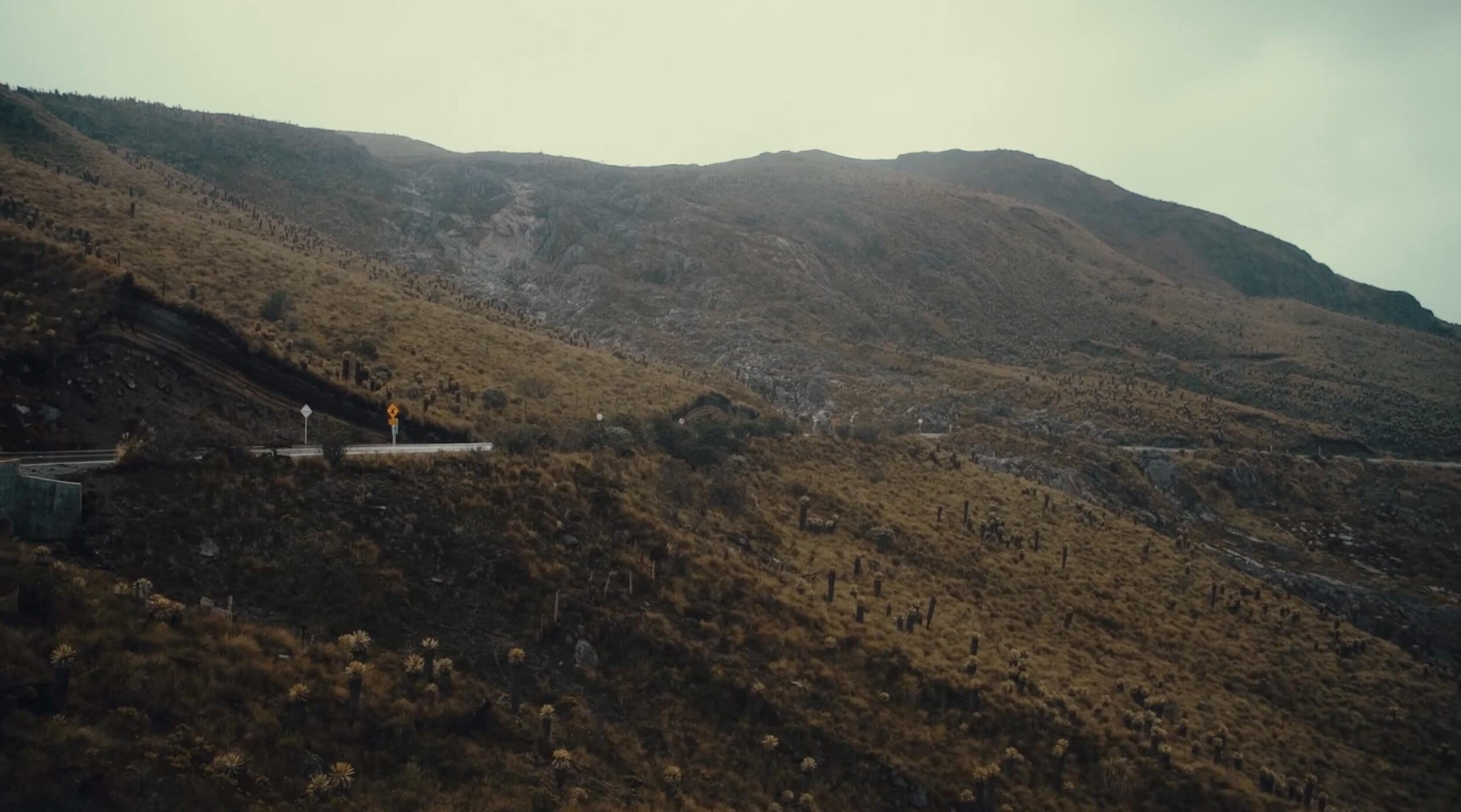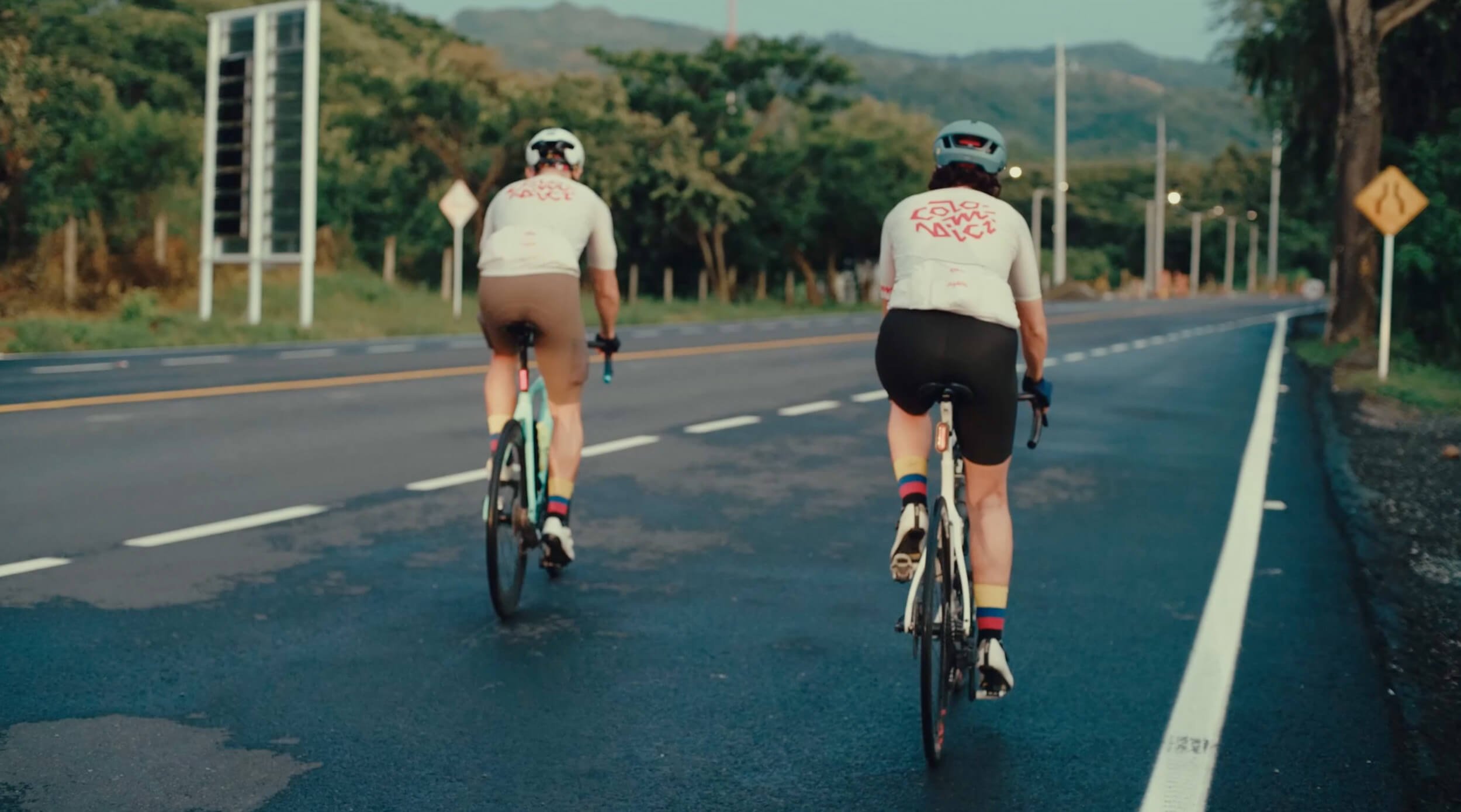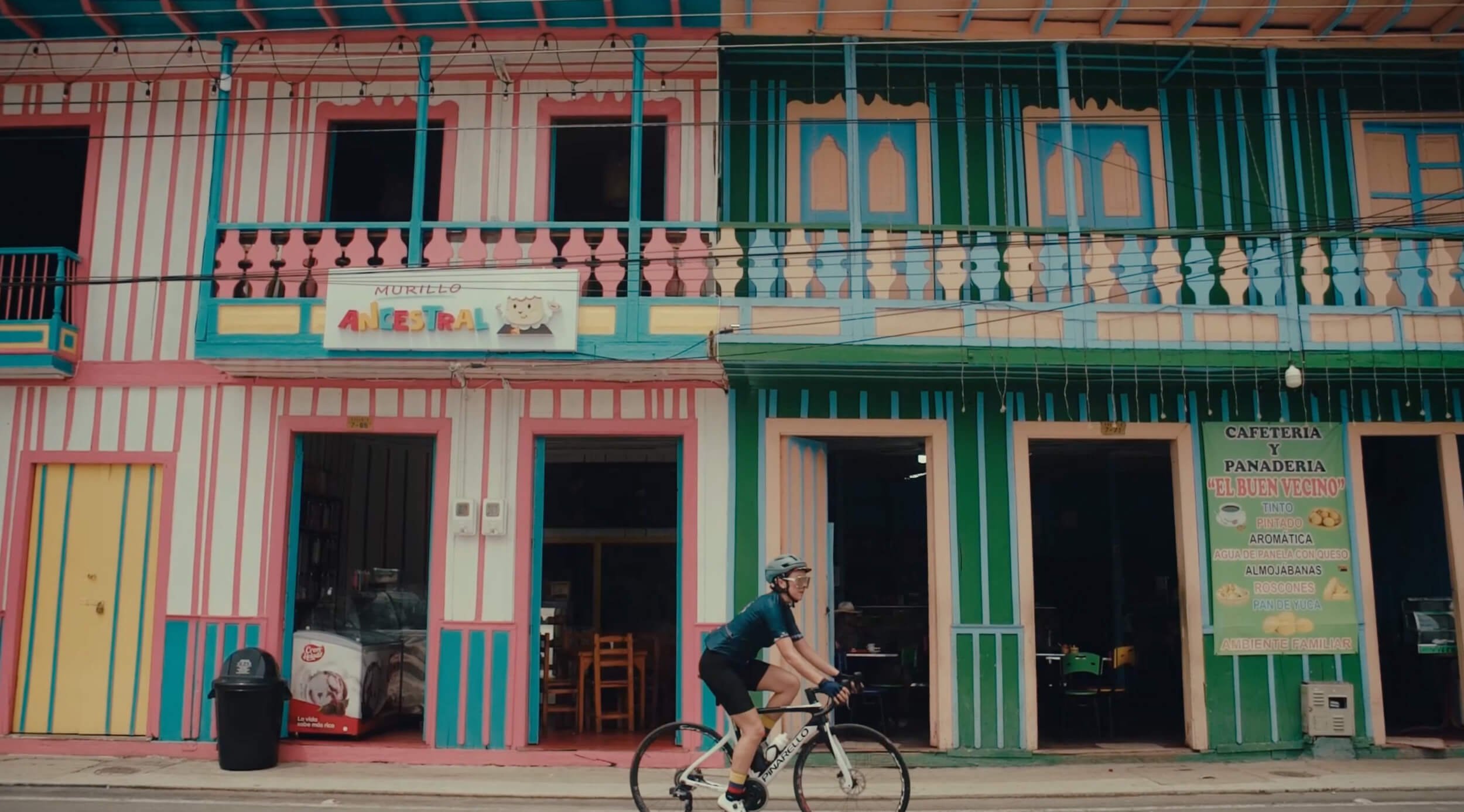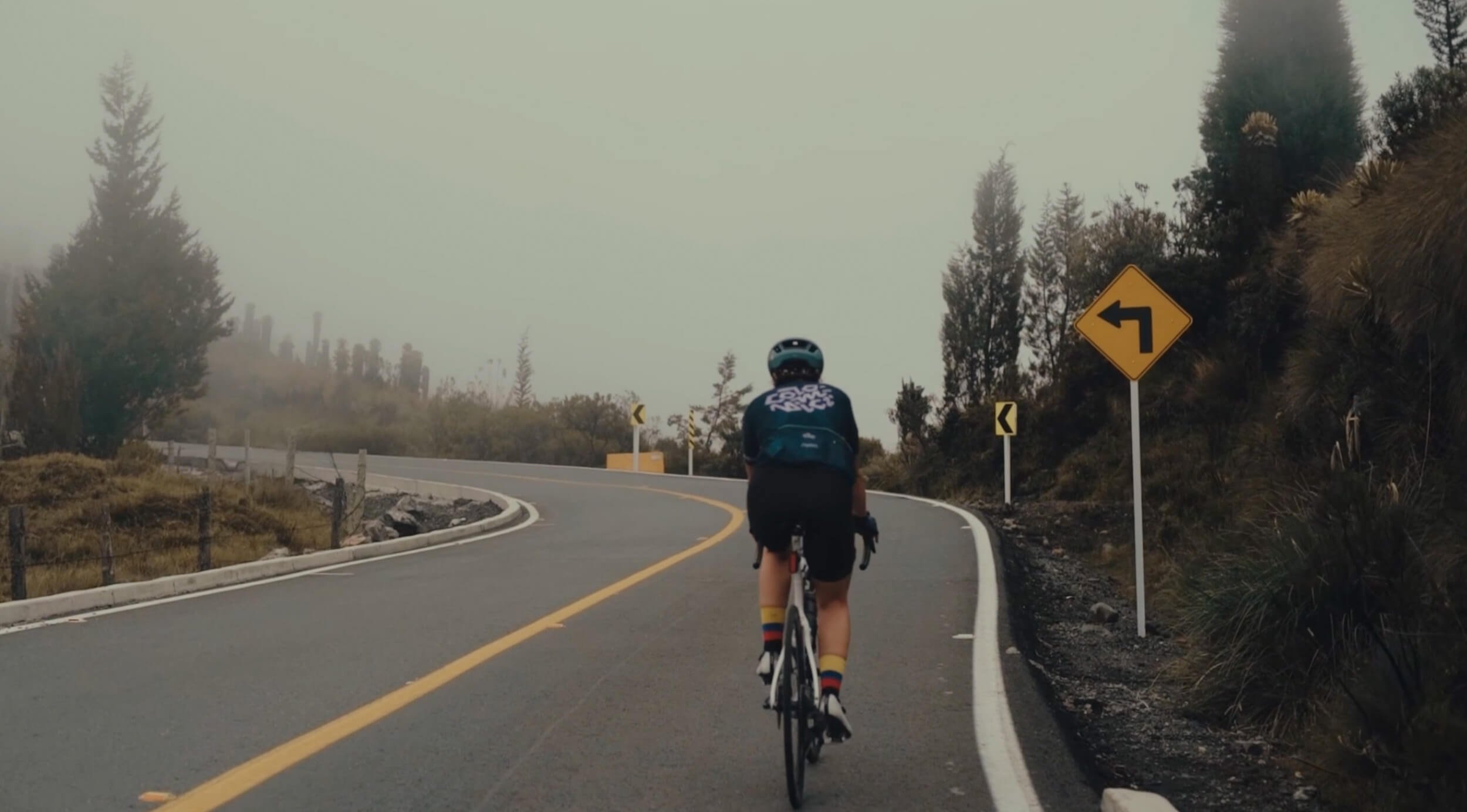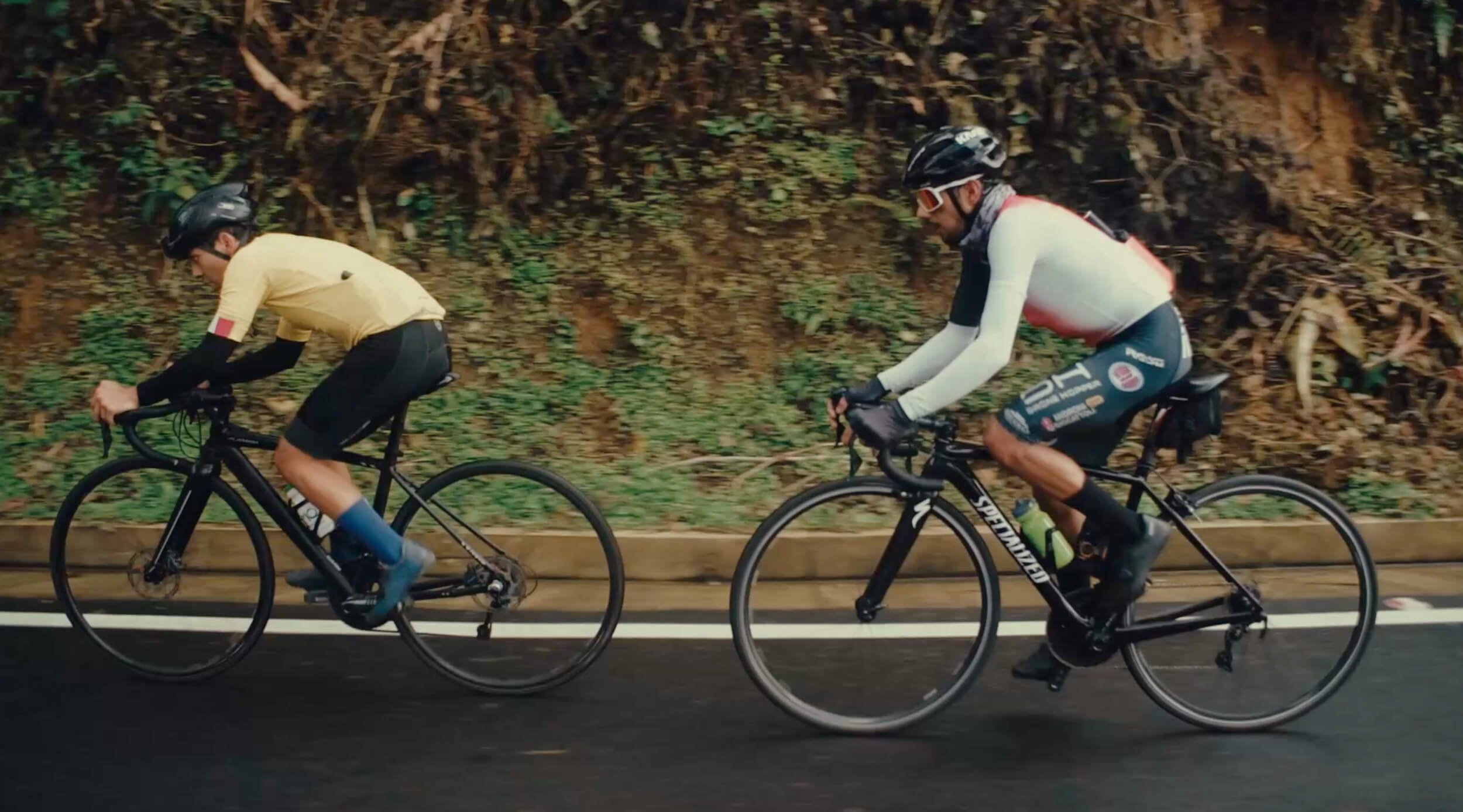Alto del Sifón: The newest longest climb in the world. How the old Letras became the new Letras.
If you Google “the world’s longest climb,” you’ll likely find Alto de Letras. This 80 km ascent, with over 4,000 meters (13,000 ft) of elevation, has tested the spirit of hardcore cyclists worldwide. But did you know there’s an even longer and more grueling climb that few have discovered?
Introducing Alto del Sifón, also known as El Sifón. This monumental 115 km (70 mi) climb, with over 4,700 m (15,500 ft) of elevation, is the latest and newest bucket list climb that the world should know about. Located in Tolima, Colombia, it offers an unparalleled challenge for cyclists looking to conquer the ‘new’ world’s longest climb.
El Sifón, nestled in Colombia's Andes, offers an awe-inspiring landscape.
Alto del Sifón isn’t steep or technical, but its sheer length makes it nearly impossible to accomplish. It’s more than four times the distance of Mont Ventoux, over twice as long as Mount Teide in Tenerife, and significantly longer than Mauna Kea in Hawaii. This unknown climb redefines the boundary of possibility, setting the stage for the ultimate challenge for cyclists worldwide.
The most popular Strava segment covers 58 km from Líbano to Alto del Sifón, passing through Murillo, near Nevado de Ruiz’s majestic slopes and snowy peaks. Yet we opted for a different start — Armero, a place with a profound story. In 1985, a volcanic eruption devastated Armero, tragically claiming over 23,000 lives, making it Colombia’s deadliest disaster to date. Before ascending the very volcano that caused this tragedy, we pay tribute to those lost.
We also opted to finish at Alto de Letras, renowned as the world’s longest climb, adding an extra 29 km to stretch our limits further. Alto de Letras holds a mystical allure among cyclists worldwide, symbolizing a monumental challenge and achievement. The summit sign serves as a cherished memento, marking the triumph over one of cycling’s toughest challenges and a milestone revered worldwide. It symbolizes not just the climb but also resilience and determination, capturing the essence of the Colombian cycling spirit.
The old Letras pass is now the new Letras.
We spent six weeks training and planning, dividing the 115 km climb into four mini-milestones to make it more digestible. Each section is a Hors Categorie (HC) beast on its own, with high altitudes, extreme weather, and sheer length. By breaking it down, we stayed motivated and energized. Monitoring our power output kept us from burning out too soon. Fueling up was key — we aimed for 80-100g of carbs per hour. This methodical strategy made conquering the world’s longest climb doable and kept the journey exciting.
This article takes you on a journey through the highs and lows, where suffering meets ecstasy, and triumph battles defeat. Experience the intense struggle and exhilarating sensation of conquering the world’s newest and longest climb. Follow our story as we navigate these polarities, unveiling the ultimate challenge of a lifetime.
The vast expanse of the Andes páramo.
We set off early in the morning with the goal of finishing before sunset. Our 4 am alarms rang, and we both groggily got out of bed, mentally preparing for the adventure ahead. We had prepared breakfast the night before in our room: overnight oats at a room temperature of 30ºC, as our hotel room lacked a fridge. We met Ismael, our driver and local guide, who would be accompanying us for the day. Juan, the filmmaker and cyclist, was capturing candid moments for the film.
Still half-asleep, we loaded our bikes and supplies into the car and then drove to the starting point, giving us some time to mentally prepare for the challenge. It was still dark as we left Mariquita, driving along the only highway and passing small towns that were just beginning to wake up. The sun started to rise, and the sky slowly brightened with an orange glow.
Our journey began at 5:30 am!
Part I: Armero – Líbano (35 Km | 22 Mi)
The car stopped just after the toll booths. Ismael looked back and nodded to indicate the starting point. The four of us stepped out of the car, each door slamming shut in perfect unison. It was 5:30 am, and we were on schedule. After a brief “good luck” and high fives, we hopped on our bikes and began the first pedal. The first 10 km had a gentle gradient of around 4-6%. The temperature was already warm and muggy, even though it was only 6 am. The excitement was palpable, but we stuck to our strategy and stayed in Zone 2. Once in a while, we looked down to see how far we had climbed and realized how much longer we had left.
The stretch from Lérida to Padilla was rich with lush plantain and banana trees, flourishing in the hot and humid climate. People from this region are known for their friendliness. We experienced this firsthand when a cyclist handed us a mango and took off at high speed. We rode with a group of local riders who were eager to share stories and explain the remaining route to us. As we entered Líbano, we faced a steep 20% wall, and the locals sprinted up effortlessly. We stopped at the main square next to a church, refilled the bottles, stretched our legs, and set off again with 80 km to the finish line!
Local fruit shops that added color and flavor to our journey.
Local farmers catching a breather.
Part II: Líbano – Murillo (23 Km | 14 Mi)
Locals warned us that the segment from Líbano to Murillo is the toughest of the entire route. A 23km (14 mi) climb at a 6.1% incline might appear feasible in theory, but in truth, it was undeniably the most demanding. We left Líbano at 8:30 am. As the day went on, the temperature and humidity increased. At an altitude of 1,500 m (5,000 ft) above sea level, we noticed a change in vegetation. The tall tropical banana plantations gave way to shrubby coffee trees. This altitude range is perfect for cultivating coffee, much like the coffee heartlands of Quindio.
An hour into the journey, the temperature and humidity became more tolerable as sweat stopped dripping down our chins. The road ahead grew misty and foggy from time to time as we entered and exited numerous clouds. The higher and further we climbed, the less traffic we encountered. Instead, we saw more livestock in action: horses, mules, and donkeys. As city dwellers, we found it fascinating to see animals still being used for daily transportation and labor.
The final 5 km into Murillo were the steepest and most demanding. Our legs were burning, and we were desperate for a break. With one last push, we powered through the climb and finally rolled into the main square, eager for a much-needed pit stop.
Murillo, Tolima – a hidden gem nestled in the Andes.
Part III: Murillo – Alto del Sifón (34 Km | 21 Mi)
The ride from Murillo to Alto del Sifón unveiled a surreal landscape of the desolate páramo — an Andean Alpine tundra found only in Colombia, Ecuador, and Peru. As we pedaled through this remote terrain, the air turned crisp and cold, and we were surrounded by total silence — so quiet that our ears rang. It felt like cycling through another planet.
As we transitioned from the lush greens at lower elevations to the desaturated páramo, we encountered frailejones — tall, spiky, succulent-like plants that only grow above 3,000 m (10,000 ft). These unique plants play a crucial role in the páramo ecosystem, with their dense rosettes capturing moisture from the air. Images of these unique plants are highlights of this journey.
Against a backdrop of endless mountain ranges stretching to the horizon, we kept pedaling and pedaling, fascinated by the rugged beauty of Colombia’s unfamiliar landscapes. However, while we tried to soak up the scenery, our attention was on our fatigue. With the altitude reaching over 4,000 m (13,000 ft), we struggled with the lack of oxygen, which was a new kind of suffering. For the first time on this trip, defeat was creeping in!
The first taste of defeat hits at Km 50 – barely half way to go!
At these extreme altitudes, where oxygen is scarce, hypoxia sets in. A condition characterized by low oxygen levels in the blood. It affects individuals differently, often leading to symptoms such as shortness of breath, increased heartbeat, hyperventilation, fatigue, dizziness, and headaches.
Having spent most of my life at sea level, the physical demands are immense. Legs burning, lungs gasping for air, pushing through the pain with every pedal stroke. It can be daunting, feeling like you might faint in the middle of nowhere with no one around. Yet, amidst the struggle, there’s a relentless sense of resilience and determination. In my mind, I kept repeating: “I didn’t wake up this morning not to finish!”
Battling the altitude at over 4,000 m (12,000 ft).
Suddenly, the iconic Nevado de Ruiz emerged on the horizon. This very active stratovolcano, famous for its towering presence, seemed to loom over us. The snowy peak, half-hidden by clouds, cast a huge shadow of doubt, making us feel intimidated and questioning if we’d finish the ride.
As we reached the summit of Alto del Sifón, every meter gained felt like a triumph over the punishing elements. At 4,100 m (13,450 ft), each pedal stroke felt heavier and harder than the one before. We were now one step closer, and the hardest part was behind us.
Friendly local riders who kept our spirits high along the way.
Part IV: Alto del Sifón – Alto de Letras
From the summit of El Sifón, the terrain transformed into rolling hills with long descents and short, punchy climbs. Wrapped our numbed toes and fingers in our warmest winter gear to combat the hostile conditions, we navigated up and down for 15 km until we stumbled upon a small hostel and restaurant in the middle of nowhere. Welcomed warmly by a local lady who runs the place, we ordered agua panela (Colombian sugarcane drink) and a tinto (black coffee), rested briefly, and then continued our journey for another 10 km until Alto de Letras.
The unique páramo landscape, found only in the high Andes.
This remote restaurant in the middle of nowhere was our savior!
As we left the restaurant, the rain poured down relentlessly. It was so heavy that visibility was reduced to a few meters ahead. Battling through the final stretch, we braced ourselves for the infamous 3 km climb to Alto de Letras from the Manizales side. Those were perhaps the toughest 3 km of my life. My legs felt empty, and each pedal stroke became an agonizing struggle. Fortunately, Maya, my wife and life domestique, shouted motivational speeches in my ears, pushing me onward. I couldn’t have finished without her!
We finally reached the summit of Alto de Letras around 4 pm, finding the most iconic Colombian cycling sign deserted. Overwhelmed with emotion and adrenaline, we snapped a quick photo before quickly packing our bikes and ourselves into a warm car to escape the freezing wind. As we descended towards Mariquita, the sky suddenly cleared, unveiling a rare, expansive panorama of the Central Andean Range. It felt like the ultimate reward for our incredible adventure.
Frailejones plants: the emblem of the Andean páramo landscape.
As we processed this once-in-a-lifetime journey, we reflected on the challenges we faced and the triumphs we achieved. Climbing Alto del Sifón was not just a physical test but an emotional and mental one. From the heart-wrenching history of Armero to the majestic beauty of Nevado del Ruiz, every kilometer brought its unique experience. But as we reached the summit, the sense of accomplishment was overwhelming, making every struggle worth it.
Navigating fatigue, steep gradients, extreme altitudes, unpredictable weather, and an incredibly long distance, we discovered something within ourselves that we didn’t know existed. Through moments of doubt and ecstasy, each pushing us to our limits, we uncovered a deeper connection — not just to Colombia’s stunning landscapes but to ourselves. We started this journey to conquer a climb and ended up experiencing an epiphany of self-discovery and personal resilience.
Colombia’s hidden beauty truly came alive on this trip, revealing diverse landscapes from lush farmlands to high-altitude páramos. Cycling these routes is a voyage through various climate zones, terrains, and rich biodiversity. Each pedal unveils more of the country’s natural wonders and cultural richness, making it clear why Colombia deserves recognition as a top cycling destination.
Empty on energy, full of triumph.
Our mission at Colombici is to make cycling a top choice for vacationers worldwide, elevating it to the forefront of tourism. We believe in the transformative power of cycling to push individual limits, foster personal growth, and embrace the journey of suffering and triumph. This adventure was just the beginning — a recon mission to create a tour that allows you to take on this challenge yourself and showcase this epic route to the world.
Ready to take on the challenge of the world’s newest longest climb? Join us on this epic journey and experience the thrill of this monumental climb and discovering Colombia’s unparalleled beauty. Experience the highs, navigate the lows, and embrace every twist and turn along the way.
📸 Juan Tirado @juanunodostres





